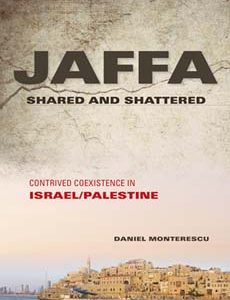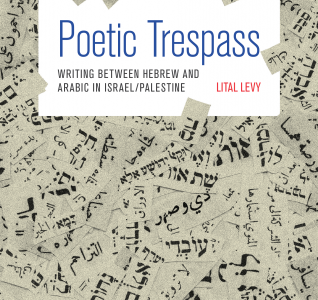-
Add to cartQuick view
Breaking Boundaries, Bricking Walls: Oriental, Sephardi, and European Jews in a Late Ottoman Palestinian Classroom
Free!This article explores the relations between European Zionists, Sephardim, and Oriental Jews in late Ottoman Palestine by narrating the story of A. Yehudai, a Bulgarian Jewish teacher in the Sephardi community of Gaza in 1913. Reading through Yehudai’s ambitions, deliberations, and frustrations, the article makes two main arguments: First, it challenges the inclusivity often attributed in scholarly literature to the category of “Sephardi,” suggesting that as a practical category used by historical figures, especially in the context of national discourses, it was regarded as much more bounded and rigid. Second, the article points to the period before European Zionist domination over Middle Eastern Jews. Through the case of late Ottoman Gaza, the article shows that Jewish communities in Palestine were essential for institutional Zionist bodies, were aware of their situation, and even used this power structure for their own gain. Taken together, both arguments testify to the fact that communal demarcations are essential for human society in the sense that the crossing of boundaries always entails the delineation of new ones.
Add to cartQuick view -
Add to cartQuick view
Daniel Monterescu. Jaffa Shared and Shattered: Contrived Coexistence in Israel/Palestine. Bloomington: Indiana University Press, 2015. 384 pp.
Free!Add to cartQuick view -
Add to cartQuick view
Individuals in Mobilized Hebrew Society: The Meanings of Setting Limits in the Diaries of the Teacher Z. (1938-1940)
Free!Mobilized society exists when a common goal is shared by masses who contribute with genuine involvement to its achievement. A mobilized Hebrew society existed in Eretz Yisrael before 1948. Many individuals had difficulty conforming to the “emotional regime” imposed by the mobilized society, which tolerated the existence of individual sentiments but not an individual’s particular desires, unless they were in line with its common ethos. The result was reflected in efforts to delineate borders between the emotional regime of the mobilized society and the individuals’ emotional refuges. The craving to preserve the emotional refuge as a complement rather than an alternative to the emotional regime was reflected by moments of personal crisis followed by deep sentiments of guilt. The article illustrates the reflections of such attitudes through the diaries of the teacher Z. during an eighteen-month period (July 1938–January 1940). Z. was a teacher of mathematics in Haifa’s Reali high school. The diaries, which are part of a private collection, are a clear reflection of Z.’s efforts to become a member of an emotional community while creating a separate, individual emotional refuge.
Add to cartQuick view -
Add to cartQuick view
Lital Levy. Poetic Trespass: Writing between Hebrew and Arabic in Israel/Palestine Princeton, NJ: Princeton University Press, 2014. 360 pp.
Free!Add to cartQuick view -
Add to cartQuick view
Names under Supervision: Israeli Linguistic Regulation of Arab Streets – Turʿan as a Case Study
Free!The present article contributes to the local study of street signs, and more generally, of majority and minority language representation. It analyzes the street signs set up by the Turʿan municipality in the North of Israel during the term of the town’s Jewish mayor Yaakov Zohar (2008-2013), shedding light on the impact of top-down political processes on the design of Arab space, its interpretation by a municipality headed by an agent of the establishment, and the namings’ implications for the Arab minority’s spatial socialization. Through the names selected and the visual and orthographic characteristics of the linguistic landscape, the article highlights the politics of shaping cultural and historical identity in physical space. The visual characteristics examined are related to the visibility of the two languages—Arabic and Hebrew—or more specifically, to the representation of one as opposed to the deliberate marginalization of the other. My reading of street signs is informed by critical toponymy and semiotics, which emphasize the ideological meanings inherent in the depth structures of names and visual communication products. I consider the initiative by a Jewish mayor to name the streets of Arab Turʿan an attempt to influence the spatial awareness of its Arab inhabitants in keeping with the values of the establishment.
Add to cartQuick view -
Add to cartQuick view
Uriel Abulof. The Mortality and Morality of Nations. Cambridge: Cambridge University Press, 2015. 384 pp.
Free!Add to cartQuick view
- Home
- About JLS
- Issues
- Vol. 9 No. 1 | Summer 2019
- Vol 8 No 2 Winter 2018
- Vol. 8, No. 1: Summer 2018
- Vol. 7, No. 2: Winter 2017
- Vol. 7, 1: Summer 2017
- Vol. 6, Summer/Winter 2016
- Vol. 5, No. 2 Winter 2015
- Vol. 5, No. 1 Summer 2015
- Vol. 4, No. 2 Winter 2014
- Vol. 4, No. 1 Summer 2014
- Vol. 3, No. 2 Winter 2013
- Vol. 3, No. 1 Summer 2013
- Vol. 2, No. 2 Winter 2012
- Vol. 2, No. 1 Summer 2012
- Vol. 1, No. 2 Winter 2011
- Vol. 1, No. 1 Summer 2011
- Blog
- dock-uments
- Subscribe
- Submit
- Contact





